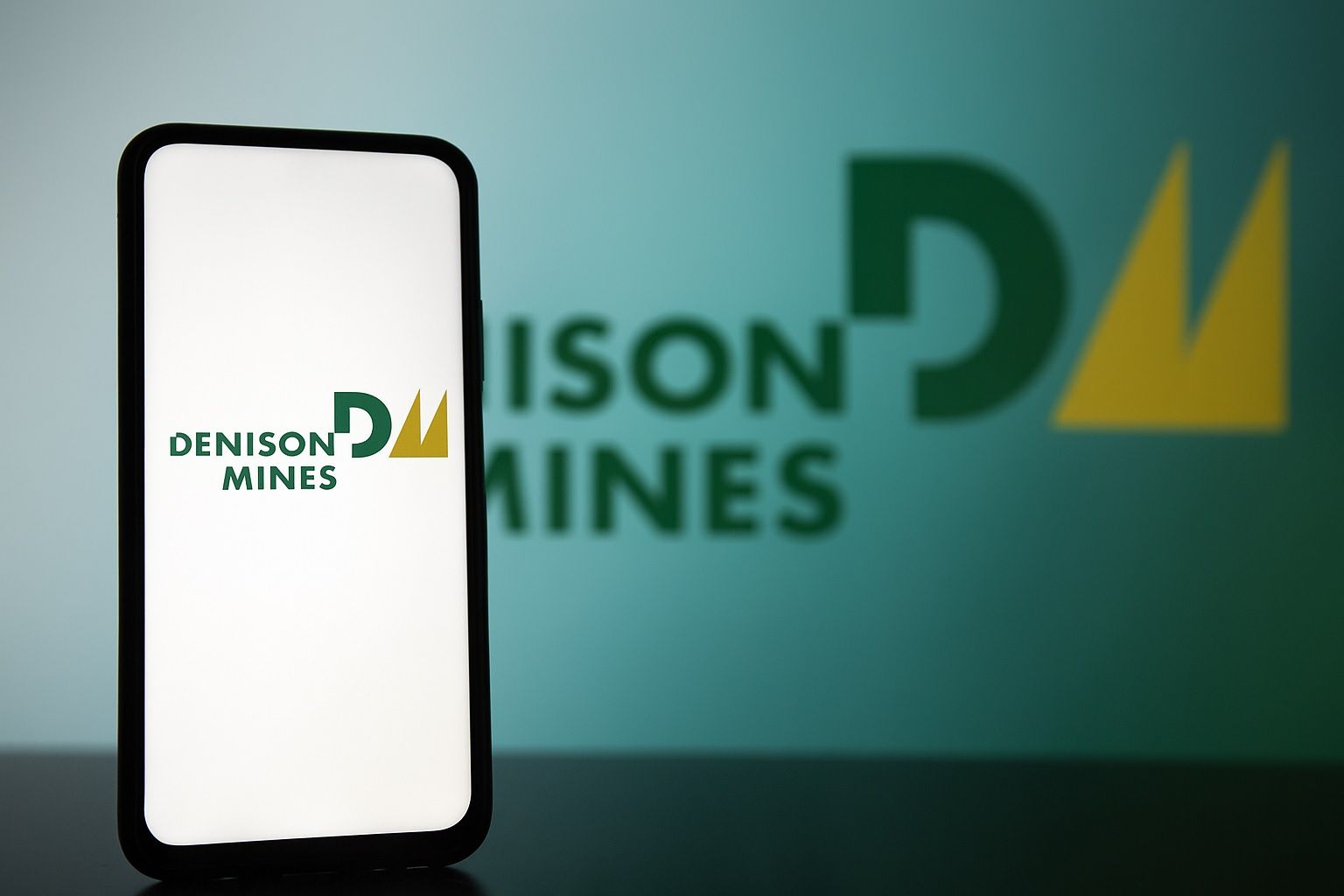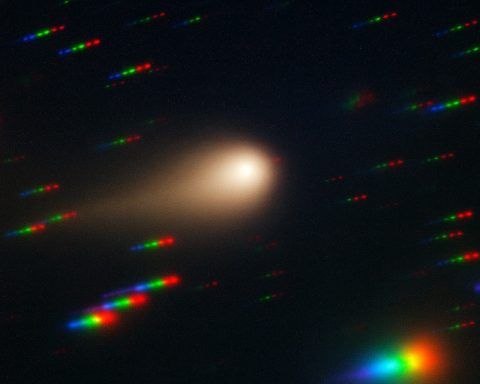- Company Focus: Denison Mines Corp. is a Canadian uranium exploration and development company centered in northern Saskatchewan’s Athabasca Basin, home to the world’s richest uranium deposits [1]. Its flagship Wheeler River Project (95% owned) hosts two high-grade uranium deposits (Phoenix and Gryphon) and is slated to become Canada’s first in-situ recovery (ISR) uranium mine [2]. Denison also holds minority stakes in several other uranium ventures (McClean Lake mill/JV, Midwest, Waterbury Lake) [3], but has no current uranium production (revenues come mainly from interest and a strategic uranium inventory sale) [4] [5].
- Stock Price & Performance (Nov 4, 2025): DNN trades around $2.80 per share, after a recent pullback. The stock surged to a 52-week high of $3.42 in late October [6] amid bullish nuclear energy news, and is still up ~54% year-to-date [7]. Over a 5-year span, Denison has climbed roughly 780% from penny-stock levels [8], vastly outperforming the broader market as uranium prices rebounded. Short-term, volatility is high (the stock often swings 7–8% in a day) and the beta ~1.3 indicates it moves more than the overall market [9]. DNN’s 50-day average price of ~$2.70 is well above its 200-day average ~$2.08 [10], reflecting strong upward momentum in 2025.
- Recent News (Early November 2025): Today (Nov 4), Denison disclosed a legal challenge by an Indigenous group that could delay its Wheeler River project. The Peter Ballantyne Cree Nation (PBCN) filed for judicial review of the provincial environmental approval granted in August, alleging insufficient consultation [11]. Denison “denies the claims” and vows to vigorously defend the project’s approval [12]. This development introduces regulatory uncertainty. In better news, last week DNN and other uranium stocks spiked ~10–12% after reports that the U.S. government will invest $80 billion to build new nuclear reactors [13]. Cameco (the largest uranium producer) jumped ~20% on that announcement, and smaller players like Denison rallied in sympathy, as investors bet that a nuclear renaissance will boost uranium demand and prices. Additionally, Denison’s Q3 2025 earnings release is scheduled for November 6 [14]; investors are watching for project updates and any change in cash burn or timelines.
- Analyst & Investor Sentiment: Wall Street is mostly bullish on DNN. Multiple analysts rate Denison a “Buy/Outperform”, including TD Securities, Desjardins, Scotiabank, National Bank, and Raymond James [15]. Recent target prices in Canada cluster around C$4.00–4.50 (≈$3.00–3.40 USD), implying moderate upside from current levels [16]. National Bank, for example, raised its target to C$4.57 after Denison’s summer financing, citing a “strengthened balance sheet” and progress toward mine development [17]. The consensus rating is effectively Buy, supported by Denison’s unique position in the uranium upcycle [18]. However, not all are unequivocally optimistic – TipRanks’ quantitative analysis currently labels DNN as “Neutral,” noting that “financial performance struggles” (ongoing losses and negative cash flow) and valuation concerns offset the positive technical momentum [19]. Short interest of ~10–11% of float also shows some investors are hedging or betting on near-term risks [20].
- Industry Outlook – Uranium & Nuclear Tailwinds: The uranium market is in a major upswing. Uranium spot prices have surged from ~$64/lb in March to around $80–82 per pound by late September 2025, the highest in over a decade [21]. This is driven by a widening supply-demand gap – global reactors consume ~180 million pounds of U₃O₈ annually, while mines produce only ~130 million lbs [22]. The ~50 million lb shortfall has been met by drawing down old stockpiles, which are now dwindling [23]. Looking ahead, demand is projected to jump ~28% by 2030 as nations expand nuclear fleets to meet clean energy goals [24]. The U.S. $80B reactor buildout alone could add ~15–20 million lbs of annual uranium demand in the 2030s [25]. Major economies (from China to Europe) and even tech giants (investing in small modular reactors for data centers) are embracing nuclear power’s role in a carbon-neutral future [26]. Green energy policies are turning more nuclear-friendly (e.g. EU’s inclusion of nuclear in its sustainable finance taxonomy), bolstering long-term demand. On the supply side, years of underinvestment and mine closures after Fukushima mean new projects (like Wheeler River) are crucial to avert a mid-term uranium shortage. Banks like Citi now forecast uranium prices could reach $100+ per pound by 2026 if these trends continue [27]. This macro backdrop forms the bullish thesis for uranium miners: a structural supply deficit, rising prices, and political tailwinds (energy security and climate policy) creating a multi-year “nuclear renaissance.”
- Competitive Position: Denison Mines is a mid-tier developer in a niche industry dominated by a few large players. Cameco Corp. (NYSE: CCJ) is the world’s largest publicly traded uranium miner – essentially “the Exxon of uranium” – with multiple producing mines in Canada and Kazakhstan. Cameco’s size and stable production give it a lower risk profile, but it commands a rich valuation. Indeed, on a per-pound basis, Cameco’s stock trades at roughly 14× the valuation of Denison’s: investors are paying about $1,400 for each pound of Cameco’s future uranium production capacity, vs just ~$100 per pound for Denison [28] [29]. This huge gap suggests Denison (and peers like NexGen) could be undervalued if their projects deliver as expected. Other notable peers include NexGen Energy (developing the giant Arrow/Rook I project in the Athabasca Basin), Uranium Energy Corp. (a U.S.-focused ISR uranium producer/acquirer), and Energy Fuels (NYSE: UUUU, which operates uranium and rare earth facilities in the U.S.). NexGen’s Rook I, expected to produce ~29M lbs U₃O₈ annually by 2030, could rival Cameco’s output [30] – yet NexGen’s market cap (~$5.2B) is a fraction of Cameco’s [31]. Like Denison, NexGen is valued at only ~$180 per lb of future production, highlighting how smaller uranium developers trade at steep discounts to incumbents [32]. Denison’s edge among juniors is its high-grade resource and faster timeline: Wheeler River’s Phoenix deposit boasts extremely high uranium grades and plans to use innovative ISR mining to start production by 2028, a couple years ahead of NexGen’s schedule [33] [34]. Additionally, Denison’s project is largely de-risked on ownership – it owns 95% of Wheeler, vs many peers in joint-ventures – meaning more upside (and more funding burden) rests on Denison’s shoulders. In summary, Cameco offers lower-risk exposure to current uranium output, whereas Denison is a higher-risk, higher-reward pure play on future production. If uranium prices stay strong, Denison’s leverage to those prices (and its much lower relative valuation) could make it a big winner. But if challenges arise, larger competitors with existing cash flow (or state-backed giants like Kazakhstan’s Kazatomprom) will better weather the storm.
- Financial Health: As a pre-production company, Denison’s financial profile reflects ongoing development mode. In the most recent quarter, Denison reported only $1.3 million in operating revenue (from management fees or incidental sources) against $19.6 million in total expenses, resulting in a net loss [35]. This is typical for a developer with no mining income yet. However, Denison is well-capitalized: it ended the quarter with over $50 million in cash on hand [36], zero net debt (cash roughly equals debt) and has since bolstered its war chest significantly. In August 2025, the company raised $345 million through a convertible senior notes offering (due 2031 at a 4.25% coupon) [37] [38]. After fees, Denison received ~$333 million net, earmarked to fund Wheeler River’s development [39]. Management even structured an innovative capped call feature to minimize dilution – effectively raising the conversion price for the notes to ~$4.32/share (versus the initial $2.92 conversion price) so that if the debt converts to equity, it would do so at much higher stock levels [40] [41]. According to CEO David Cates, these proceeds put Denison “in an excellent financial position to make a future final investment decision (FID) and to commence construction” on the Phoenix ISR mine once permits are in hand [42]. In addition, Denison has monetized some non-core assets to boost liquidity – notably, it holds an inventory of physical uranium acquired at lower prices; in 2023 the company realized a $134 million gain by selling some of these holdings into a rising market [43]. This opportunistic strategy not only provided cash without share dilution, but also underscored Denison’s leverage to uranium price upside. Bottom line: Denison currently generates negligible revenue and continues to post accounting losses (over $60 million net loss in the past year [44]). But with a cash-rich balance sheet and major financing secured, it appears to have the funds to build its first mine. Notably, its debt is entirely the convertible note (cash-settlement optional), which carries a modest interest cost and was chosen over more expensive project loan financing [45]. This relatively strong financial footing (unusual for a small cap miner) removes the immediate need for dilutive equity raises, though cost overruns or delays could still necessitate further capital down the road.
- Upcoming Catalysts: The next 6–12 months are pivotal. Regulatory approvals are the gating item – Denison already received provincial environmental approval for Wheeler River in mid-2025, and the final federal environmental review and construction license hearings are taking place in late 2025 [46]. A positive federal decision (expected by early 2026) would clear the way for full construction start. The recent PBCN legal challenge adds a wrinkle: if the court forces additional Indigenous consultation, the timeline could slip. Investors will also watch for Denison’s final investment decision (FID) on the Phoenix deposit, which management tentatively plans for 2026 pending permit outcomes [47]. On the operational front, initial site works and long-lead item procurement may accelerate as approvals firm up. Any updates on project economics (for example, an updated feasibility study incorporating current uranium prices or costs) could impact the stock – the last published feasibility (2023) showed Phoenix’s ISR operation could produce ~12 Mlbs U₃O₈ per year with an 80%+ internal rate of return (IRR) at $50/lb uranium [48], which is extremely robust (and even more so at today’s ~$75–80/lb prices). If Denison can execute to that plan, it would become one of the lowest-cost uranium producers globally. Meanwhile, sector news will continue to sway DNN: e.g. any moves by OPEC-like supplier groups (Kazatomprom or Cameco) to constrain supply, geopolitical developments (sanctions on Russian uranium), or further government incentives for nuclear fuel could all lift the uranium price – and Denison’s fortunes. Conversely, any softening in uranium prices or negative nuclear headlines (for instance, delays in reactor projects or a safety incident) could quickly cool the recent enthusiasm.
Stock Forecast and Investment Outlook
Denison Mines presents a high-upside, high-risk profile as an investment. Here we outline the bull case vs. bear case for DNN stock going forward:
Bullish Case
- Leveraged Play on Uranium “Supercycle”: With its flagship project on track to begin production in 2028, Denison is timed to ride the wave of surging uranium demand. Any further rise in uranium spot prices (which many analysts predict given the supply deficit) directly boosts Wheeler River’s future profitability and Denison’s asset value. In a scenario where uranium reaches $100+/lb (as some forecasts suggest [49]), Denison’s in-ground reserves and low-cost production potential could make the stock soar disproportionately – offering torque that larger, already-producing miners may not deliver.
- High-Grade, Low-Cost Project = Strong Economics: Wheeler River’s Phoenix deposit isn’t a typical uranium mine – it’s exceptionally high-grade and will use in-situ recovery mining, which is cheaper and more environmentally friendly than conventional mining [50]. The feasibility study indicates Phoenix could be profitable even at much lower uranium prices, with operating costs under ~$10/lb [51]. If executed well, Phoenix could generate hefty cash flows by late this decade, turning Denison from a cash-burning explorer into a cash-rich producer. This potential transformation – essentially “crossing the chasm” to producer status – often yields a significant re-rating of a mining stock.
- Funded and Financially Secure: Unlike many small-cap miners that constantly dilute shareholders, Denison has ample liquidity to fund its plans (boosted by the $333M financing) [52]. The company’s innovative financing (capped-call convertible) also limits future dilution, meaning current shareholders stand to retain more upside if the stock appreciates [53] [54]. Denison’s balance sheet strength and lack of net debt provide a cushion to withstand setbacks and give it negotiating power (for potential partnerships or off-take agreements) without rushing into unfavorable terms.
- Supportive Market Sentiment: The stock enjoys positive sentiment from analysts and institutional investors. Four reputable brokers initiated or upgraded to bullish stances in recent months [55]. The consensus price targets in the ~$3.00+ range (or ~C$4+) imply Wall Street sees further upside as development milestones are hit. Institutional ownership is over 36% [56], and new funds have been taking positions – a sign that “smart money” is aligning with the uranium thesis. If Denison delivers on key milestones (permits, FID, construction start), it could attract even more interest, potentially even becoming a takeover target for a major producer looking to snag a top-tier asset.
- Strategic Uranium Holdings: As a side benefit, Denison’s holding of physical uranium (initially acquired as a strategic inventory) not only gave it a one-time gain, but continues to serve as a hedge and asset. In a rising price environment, these holdings appreciate and can be sold for cash (as demonstrated in 2023 [57]). It’s almost akin to a built-in uranium ETF within the company, offering investors direct exposure to uranium price movements alongside the mining project.
Bearish Case
- Regulatory and Permitting Risks: The biggest near-term risk is the regulatory approval process. The new legal challenge by PBCN underscores that obtaining and retaining permits is not a sure thing. If courts determine additional Indigenous consultation is required, Wheeler River’s construction could be delayed or conditions imposed, slowing the project. Any slippage in the federal licensing (or an adverse ruling on the environmental assessment) would severely dent the stock’s momentum. Regulatory setbacks could also increase costs or require project design changes. In short, Denison is not guaranteed to smoothly go from “shovel-ready” to actual shovels in the ground – mining projects, especially in environmentally sensitive areas, face inherent permitting uncertainty [58] [59].
- Execution and Funding Challenges: Even with money in the bank, building a mine is a complex endeavor. Cost overruns, engineering issues, or delays in construction could eat into Denison’s cash reserve. If development ends up costing more than expected or takes longer, the company may have to raise additional capital. That could mean issuing more shares or taking on debt, potentially at less favorable terms. Such dilution or increased leverage, especially if unexpected, would likely hurt the share price [60]. Additionally, Denison’s team must execute novel ISR techniques in a region that hasn’t seen them before – any technical hiccups during ramp-up (e.g. lower than expected uranium recovery rates, groundwater management issues) would pose setbacks to hitting the projected ~12 Mlb/year output and high IRR.
- Uranium Price Volatility: The bullish demand story for uranium comes with a flip side: commodity price risk. Uranium prices have historically been volatile and influenced by geopolitical events and utility procurement cycles. If the current rally pauses or reverses – for instance, if global economic weakness reduces energy demand, or if idle mines restart and flood the market – uranium could pull back from recent highs. A drop back to, say, $50–60/lb uranium would not doom Denison, but it could make investors question the lofty valuations in the sector. Lower uranium prices would also make financing or partnering more challenging for Denison’s project (less attractive for potential investors or customers). In essence, DNN’s stock is highly correlated to uranium price sentiment, so any swoon in the commodity could trigger an outsized decline in the stock.
- No Current Earnings – Valuation Stretch: Until 2028 (or later) when Phoenix is operational, Denison will generate no meaningful earnings. All traditional valuation metrics (P/E, EV/Sales, etc.) are therefore based on future projections and are currently very high or not meaningful [61]. This means the stock’s ~$2.8 price already embeds optimism about successful production down the road. If that future needs to be pushed further out or if any doubts creep in, the stock could re-rate sharply downward since there are no hard earnings underpinning it yet. The Price-to-Sales ratio is astronomic (hundreds of times) due to minimal sales [62], and while that is expected for a developer, it underscores that the valuation leaves little margin for error. A broad market downturn or risk-off sentiment could particularly hit companies like Denison that are priced on long-term prospects rather than current fundamentals.
- Market Sentiment and Liquidity: Despite strong year-to-date performance, Denison’s stock is known for big swings and can be news-driven. The high volatility (annualized ~50+%) [63] means investors must stomach large short-term drawdowns. If sentiment on the uranium sector shifts or if hedge funds trading uranium plays decide to take profits, DNN could see quick declines. The presence of significant short interest (~10% of float) also raises the possibility of negative reports or trading pressure from skeptics. And while institutional ownership is decent, it also means if a couple of large holders decide to exit (like Regal Partners recently trimming half its stake) [64], it could put selling pressure on the stock. In a less liquid market environment, sharp price moves could be exacerbated.
In conclusion, Denison Mines (DNN) offers a compelling story at the crossroads of a global nuclear energy revival. The company has an enviable asset – a high-grade uranium project with innovative mining technology that could come on-line just as the world’s uranium supply crunch hits. It boasts a solid balance sheet and has garnered positive attention from industry observers and analysts [65]. These factors underpin the optimistic view that DNN could be a “hidden gem” poised to ride the uranium bull market to new heights. On the other hand, investors must recognize the execution risks inherent in bringing any mine to fruition, especially one subject to stringent environmental and community scrutiny. DNN is best suited for those with a higher risk tolerance who believe in the long-term “nuclear renaissance” narrative and are willing to weather volatility. For such investors, Denison offers pure-play exposure to uranium’s upside, with the potential for outsized rewards if all goes right. More conservative investors, however, may prefer established producers (like Cameco) or may wait for Denison to clear its remaining hurdles. As 2025 progresses, keep an eye on the permitting news and the uranium price trend – they will likely determine whether Denison Mines stock continues glowing or loses some of its radiance in the months ahead.
Sources: Denison Mines Corp. press releases [66] [67] [68]; Insider Monkey/MarketBeat reports [69] [70]; Investing.com analysis [71] [72]; Finimize and StocksToTrade research [73] [74]; Yahoo Finance/PR Newswire archives [75] [76].
References
1. www.prnewswire.com, 2. www.investing.com, 3. www.prnewswire.com, 4. finimize.com, 5. finimize.com, 6. finviz.com, 7. finviz.com, 8. finviz.com, 9. www.marketbeat.com, 10. www.marketbeat.com, 11. www.prnewswire.com, 12. www.prnewswire.com, 13. www.insidermonkey.com, 14. finviz.com, 15. www.marketbeat.com, 16. finviz.com, 17. finviz.com, 18. www.marketbeat.com, 19. www.tipranks.com, 20. finimize.com, 21. www.investing.com, 22. www.investing.com, 23. www.investing.com, 24. www.investing.com, 25. www.investing.com, 26. www.investing.com, 27. www.investing.com, 28. www.investing.com, 29. www.investing.com, 30. www.investing.com, 31. www.investing.com, 32. www.investing.com, 33. www.investing.com, 34. www.investing.com, 35. stockstotrade.com, 36. stockstotrade.com, 37. www.prnewswire.com, 38. www.prnewswire.com, 39. finviz.com, 40. www.prnewswire.com, 41. www.prnewswire.com, 42. www.prnewswire.com, 43. finimize.com, 44. finviz.com, 45. www.prnewswire.com, 46. www.prnewswire.com, 47. www.prnewswire.com, 48. www.investing.com, 49. www.investing.com, 50. www.investing.com, 51. www.investing.com, 52. finviz.com, 53. www.prnewswire.com, 54. www.prnewswire.com, 55. www.marketbeat.com, 56. www.marketbeat.com, 57. finimize.com, 58. finimize.com, 59. finimize.com, 60. finimize.com, 61. finimize.com, 62. finviz.com, 63. finimize.com, 64. www.marketbeat.com, 65. www.marketbeat.com, 66. www.prnewswire.com, 67. www.prnewswire.com, 68. www.prnewswire.com, 69. www.insidermonkey.com, 70. www.marketbeat.com, 71. www.investing.com, 72. www.investing.com, 73. finimize.com, 74. stockstotrade.com, 75. finviz.com, 76. finviz.com












